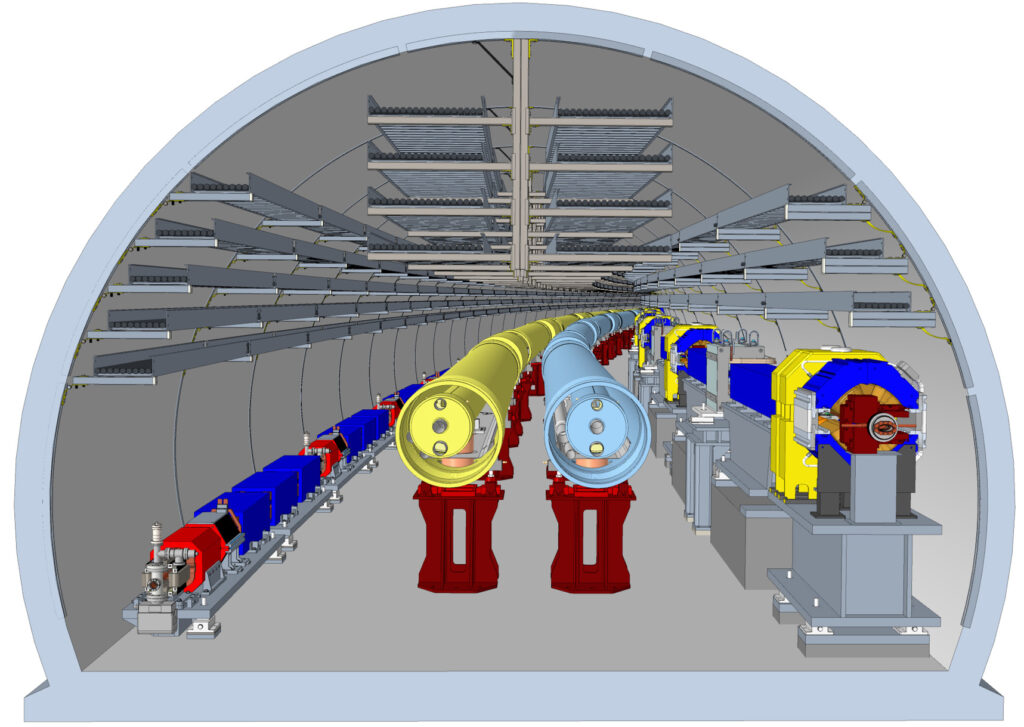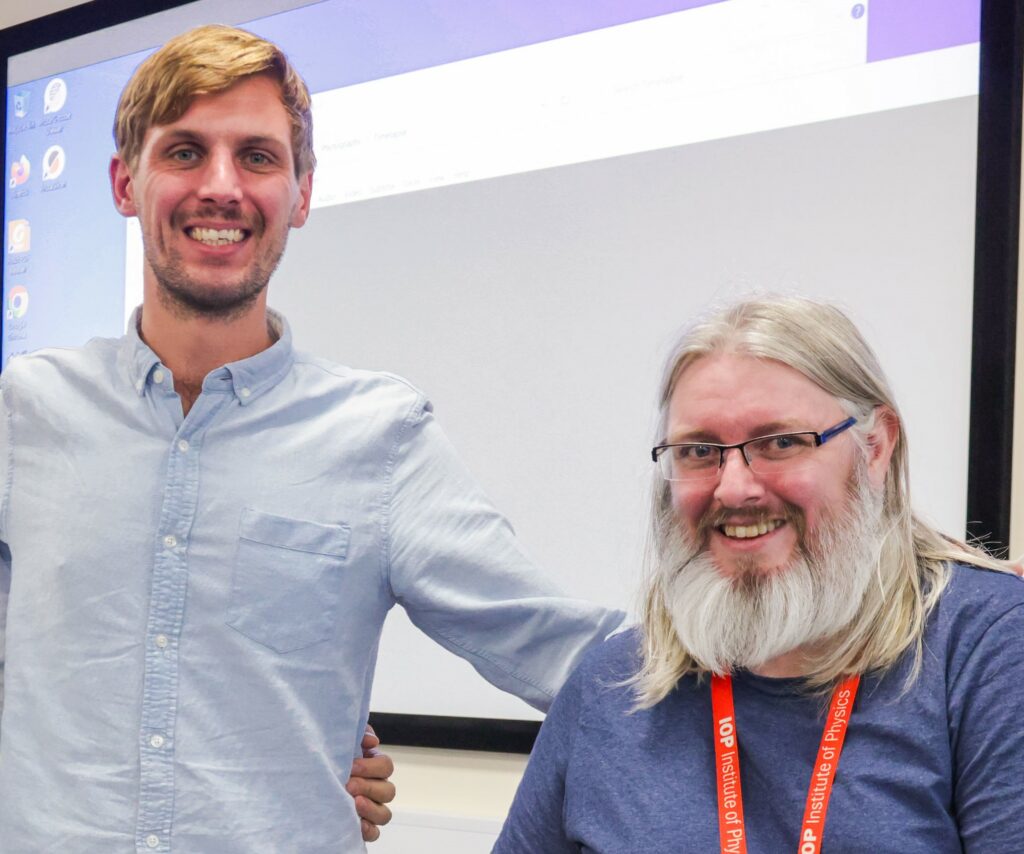UK Research and Innovation (UKRI) announced on 27 March 2027 that it is investing a total of £481 million into a portfolio of research and innovation infrastructures that will help maintain the UK’s position as a research and innovation superpower.
Amongst these significant investments are two particle accelerator-based research infrastructures to which experts from the Cockcroft Institute (CI) have been making key contributions: The Relativistic Ultrafast Electron Diffraction and Imaging (RUEDI) facility and the Electron Ion Collider (EIC).
RUEDI will be the most powerful high energy electron microscope in the world for ultrafast imaging, and the world’s fastest electron diffraction facility. It will be based at Daresbury laboratory and receive £124.4 million from the UKRI Infrastructure Fund. Dr Tim Noakes from CI partner ASTeC is the RUEDI Instrument Design Project Sponsor and says: “This is great news for the Cockcroft Institute, ASTeC and Daresbury Laboratory. The new RUEDI facility will deliver a world-leading capability in ultrafast science that will benefit both academic and industrial users for many years to come.”
The EIC is set to receive almost £60 million from UKRI in a partnership with the US Department of Energy (DOE) to develop a new collider that will help address fundamental questions on the nature of matter. This groundbreaking facility aims to uncover the inner workings of atoms by studying quarks and gluons, the fundamental building blocks and binding forces of nuclear particles. The EIC is expected to deepen our understanding of the material universe and drive technological innovation.

The grant includes funds for accelerator hardware delivery for Cockcroft Institute partners at Daresbury and Lancaster, to deliver superconducting RF cryomodules for EIC. The accelerator workpackage will be led by engineer Nik Templeton of Daresbury Laboratory. Nik says: “EIC is one of the most exciting new particle accelerator projects worldwide and presents a fantastic opportunity for the UK to collaborate in world-leading science and engineering. Our team at Daresbury Laboratory will design and deliver Superconducting Radiofrequency (SRF) Cryomodules for the facility, drawing upon the skills and experience gained from past projects with CERN, Fermilab (US), and TRIUMF (Canada). Daresbury’s involvement will strengthen the UK’s capabilities in SRF engineering and further establish world-class skills and expertise in the North West.“
CI engineer Professor Graeme Burt from Lancaster University who is the interim spokesperson of the UK EIC accelerator consortium comments: “The EIC will be a microscope into the forces that bind particles together leading to new understanding of the world around us. I am proud that the UK will be delivering key hardware enabled by our world-class capabilities and skills to this internationally leading project.”

CI expert Professor Carsten P Welsch from the University of Liverpool is Co-chair of the international EIC Accelerator Collaboration. He adds: “The construction of the EIC at Brookhaven National Laboratory marks the establishment of a world-leading facility for nuclear physics. This major investment will further strengthen the US – UK collaboration.”
The long-term nature of these investments will help to maintain the UK’s key position on the world stage of research and innovation for the future.
